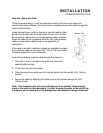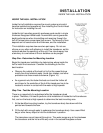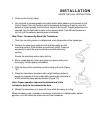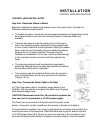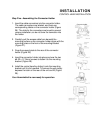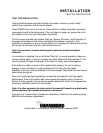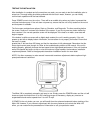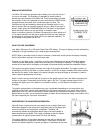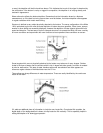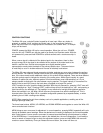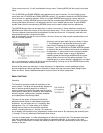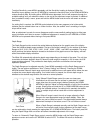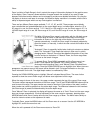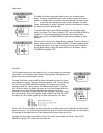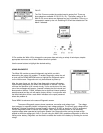
Once a menu times out, it is still considered the active menu. Pressing MENU will bring up the last used
menu.
The UP ARROW and DOWN ARROW make adjustments to menu functions. On the left side of every
menu there are UP ARROW and DOWN ARROW symbols. The symbols indicate which ARROW button
has a function in a particular situation. Either one or both ARROW buttons can be used to adjust the
menu function. A hollow ARROW symbol means that the corresponding ARROW button has no function.
Pressing that button will result in no adjustment and the "error" audible will be heard. A solid ARROW
symbol means that the corresponding ARROW button can be used to affect the menu adjustment.
The ARROW buttons often can be used when no menu is on-screen. In these situations, pressing the
ARROW button affects the function of the active (last-used) menu. This is a short-cut to menu operation.
The menu appears onscreen while the adjustment is made and 'times out'. A frequently used menu can
be adjusted very quickly using this technique.
After an adjustment is made to a menu function, the menu "times out" after several seconds and the unit
returns to normal operation.
All menus use the same basic layout as shown in Figure
F. The heading at the top describes the menu function
(see Control Functions for more details on individual
functions). The UP ARROW and DOWN ARROW symbols
to the left of the menu indicate which buttons are available
for adjustment. In menus which have numerous possible
settings such as depth range, a range of adjustment
indicator shows the total range available and the current
setting. Within the menu are the options available. The
selected option or current setting is highlighted in the black
box. If no adjustment is made, this will be the selected setting. Pressing one of the ARROW buttons while
the menu is on-screen selects another option.
Several of the menus are multi-step. In some situations if an adjustment is made, additional options
become available for further adjustment. Examples of these multi-step menus are Depth Range, Depth
Alarm and Zoom. See the detailed description of each function for further explanation.
MENU FUNCTIONS
Senstivity
The Sensitivity function controls the sensitivity of the
sonar receiver. The Wide 128 automatically adjusts the
level of receiver sensitivity based on a number of
factors including the depth of the water and the level of
noise present. Noise can be caused by other electronic
devices, engines, trolling motors, propeller cavitation
and hydrodynamic flow among others.
The user has the option of biasing this Sensitivity
adjustment either higher or lower based on personal
preference. You can select one of 11 sensitivity bias
settings from -5 to +5. A bias setting of 0 (Factory
Setting) has no effect on the automatic sensitivity
control. Increasing the bias (+1 through +5) causes the
unit to display the information from progressively smaller sonar returns. By decreasing the sensitivity bias
(-1 through -5), the unit effectively filters small sonar returns.
In murky or muddy water, it is often advantageous to reduce the sensitivity bias. This prevents the display
from being cluttered with sonar returns from debris or suspended particles. In very clear or very deep
water, it may be desirable to increase the sensitivity bias since even the smallest sonar return may be of
interest to the user.



